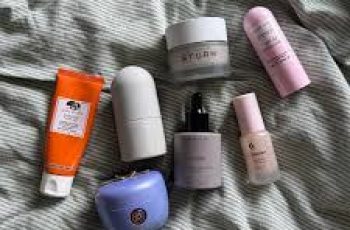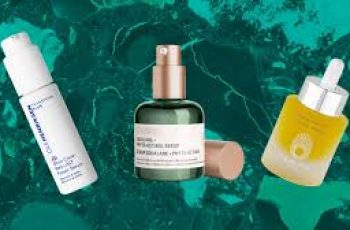
What causes dry patches on the face?
Xerosis cutis is characterized by dry, white, purple, or red, scaly patches on the skin. Skin conditions such as eczema and psoriasis increase the likelihood of dry skin.
Allergies to certain medications and skincare products can also cause dry skin. Although anyone can develop xerosis cutis, it is most common in older adults. 1
A dermatologist (a doctor who specializes in skin conditions) can help you determine the cause of your dry skin and find the best treatment.
For chronic (long-term) dry skin, additional visits may be needed to monitor the course of treatment. 1
What do dry patches on the face look like?
The appearance of dry skin patches varies depending on your skin type. In general, dry skin causes rough, flaky, and scaly skin. 2
In the case of lighter skin, some people may also notice red, pink, or white discoloration on the dry skin patches. On darker skin, the dry patches may appear red, purple, or white.
Your skin may also appear cracked. The size of the dry skin patches may vary. Your skin may also feel more irritated or itchy to the touch. 2
Causes
There are many reasons why your skin texture or appearance can change suddenly.
Dry skin can be a temporary response to a change in the environment, a reaction to aging, or a symptom of an acute (short-term) or chronic (long-term) illness. 3
Environmental influences
Dramatic weather changes are a common cause of dry skin. Extremely cold weather can make it difficult for your skin to retain moisture. Low humidity can lead to dry heat both indoors and outdoors.
4 Extremely hot weather and excessive sun exposure can also dry out your skin. 3
If you are using new skin care products or your skin has recently been exposed to certain chemicals, this can cause inflammation.
For example, using harsh soaps or having recently been in a chlorinated swimming pool can cause dry skin. 1
Allergic contact dermatitis can be triggered by contact with substances you may be allergic to. Simply substances that irritate your skin can cause irritant contact dermatitis. 3
Protect your skin when using cleaning products, caring for plants, or using antibiotics that can be very stressful to your skin.
Chemicals, toxic plants, metals, and antibiotics such as neomycin are common causes of contact dermatitis. 3
Aging
Although dry skin can affect people of all ages, it becomes more common as we age. As we age, the skin naturally produces less sebum (oil).
Sebum keeps your skin soft and moisturized. As sebum production decreases, wrinkles and fine lines on the face become more noticeable with age because the ability to retain moisture decreases.
Lechner A, Lahmann N, Lichterfeld-Kottner A, et al. Dry skin and the use of leave-on products in care: a prevalence study in nursing homes and hospitals.
Nurs Open. 2018;6(1):189-196. doi:10.1002/nop2.204
Several studies have shown that dry skin is more common in older adults, especially those living in nursing homes or community care settings.
65 Older adults are more likely to have chronic or coexisting medical conditions that require medications that may increase the risk of dry skin. 7
Eczema
Eczema, or neurodermatitis, is a chronic skin disease that alters the skin’s protective layer. The primary cause of eczema remains unclear.
However, researchers know that these symptoms can be inherited, triggered by stress and environmental factors, or caused by insufficient production of filaggrin, a protein that moisturizes the skin. 8
Typical symptoms include itching, dryness, redness, and a rash that may ooze or crust over. Eczema flares (short-lived symptoms) can occur anywhere on the body at any time and appear as dry patches. 8
Psoriasis
Psoriasis is a chronic skin disease caused by an overactive immune system. The exact cause of this overactive immune response is unknown.
Psoriasis causes skin cells to grow rapidly on top of each other. 9
This causes raised, inflamed, dry patches of skin that are red, white, or purple. Depending on the severity of the psoriasis, some areas may crack or bleed.
People with psoriatic arthritis (PsA) may also experience stiffness or pain in the joints. 9
Hormonal changes
Your hormone balance has a significant impact on the appearance of your skin and your overall health.
Hormonal imbalances can change the amount of collagen (a protein that helps build tissue) and sebum your skin produces. Pregnancy, menopause, and thyroid disease can cause hormonal imbalances. 10
Lower estrogen levels can also reduce sebum production in the skin.
An overactive thyroid gland (hyperthyroidism) or underactive thyroid gland (underactive thyroid gland) can cause dry skin, rashes, and discoloration. 11
Uncommon causes
There are many other less common possible causes of dry skin on the face.
If the most common causes of dry skin on the face are not present, your dermatologist may also consider the following possible causes:1
Chronic medical conditions: Many conditions, such as diabetes, kidney disease, HIV, and liver disease, can cause inflammation of the skin, sometimes leading to dry skin.
Dietary changes: Not getting enough nutrients (malnutrition) or fluids (dehydration) can cause dry skin.
Eating disorders, such as anorexia nervosa (AN), can also affect the skin. 1 AN is characterized by symptoms such as extreme food restriction.
Precancerous cells: In rare cases, potentially cancerous cells can cause inflammation that can lead to dry patches on the skin.
12 Some people may develop a precancerous skin growth called actinic keratosis—dry, cracked, or inflamed patches of skin caused by excessive exposure to UV rays. 13
When to see a doctor
If a product causes your skin to dry out, symptoms usually go away once you stop using the product.
However, if irritation persists and dry patches spread to other parts of your body, see a dermatologist.
If you also have symptoms like fever, rash, or swelling, seek emergency medical attention. 14
A dermatologist or other doctor can help you develop a plan to treat your dry skin. This usually involves relieving discomfort, replacing lost moisture, and protecting the skin so it can heal.
A dermatologist can use a lighted magnifying device called a dermatoscope to examine your skin more closely.
You can also take a small sample of skin (biopsy) and send it to a lab for microscopic examination. 17
If you can’t see a dermatologist right away, your primary care doctor can examine your skin and refer you to a dermatologist or prescribe topical medications to relieve your symptoms. 18
Your doctor will also ask about your medical history and any preexisting conditions. To treat itching and inflammation, dermatologists often prescribe topical corticosteroid medications. 16
Treatment
You can minimize or even eliminate symptoms by restoring and maintaining your skin’s moisture with regular skin care.
However, if an underlying medical condition, such as eczema, psoriasis, or a hormonal imbalance, is causing your dry skin, you may want to consult a doctor to treat your condition. 1
Taking certain medications can also increase your risk of dry skin on your face. Some topical and oral medications, such as B. diuretics, can dry out your skin.
Diuretics remove excess fluid from the body. Statins, commonly used to treat high cholesterol, can also reduce skin moisture. 1
Some prescription and over-the-counter topical medications, such as B. acne medications and retinoids, can disrupt the skin barrier, causing irritation and dryness.
19 Certain medical treatments, such as dialysis, chemotherapy, and radiation therapy for chronic conditions, can also cause dry skin. 20
Lifestyle Changes
There are many things you can do every day to relieve symptoms of dry skin, most of which require only minor changes to your daily routine. 21
Moisturize your skin with an occlusive (moisturizing) ointment or cream immediately after showering or exfoliating. Common ingredients in moisturizers include glycerin, hyaluronic acid, and ceramides.
Daily strategies to keep your skin hydrated include:21
Showering or bathing for less than 10 minutes.
Switching to fragrance- and dye-free soaps, detergents, and skin care products.
Avoiding extreme heat and dry air.
Applying moisturizing sunscreen.
Using a humidifier in the winter. 22
Prevention
If you have an underlying condition that causes dry skin, it may be difficult to completely eliminate it. However, you can take steps to prevent future dry skin patches. 14
It’s important to protect your skin from harmful influences during both the winter and summer months.
This includes covering up in extremely cold weather and using sunscreen when you’re outdoors for long periods of time. 14
Apply a moisturizer at least once a day, even if your skin doesn’t feel dry. After seeing a dermatologist, you may notice that dry patches gradually disappear completely.
Even if symptoms seem to be under control, continue with your treatment plan as recommended by your doctor.
At your follow-up appointment, your dermatologist can determine if you need to continue treatment. 22
Complications
Extremely dry skin can become damaged over time if it goes untreated for too long. If the itching is severe, cracks or openings may form, making the skin more susceptible to skin infections. 1
If your skin becomes infected, your dermatologist may prescribe topical medications or antibiotics to treat the infection.
People with other medical conditions, such as diabetes or a weakened immune system, are more susceptible to skin infections. 23
Brief Overview
Dry skin is a common skin problem. It has a variety of causes, such as allergies to certain chemicals, substances, or metals. Chronic conditions such as eczema and psoriasis can also cause dry skin.
If you notice patches of dry skin on your face, see a dermatologist to discuss the best treatment.
A dermatologist can develop a treatment plan for you and give you advice on how to best moisturize your skin.


